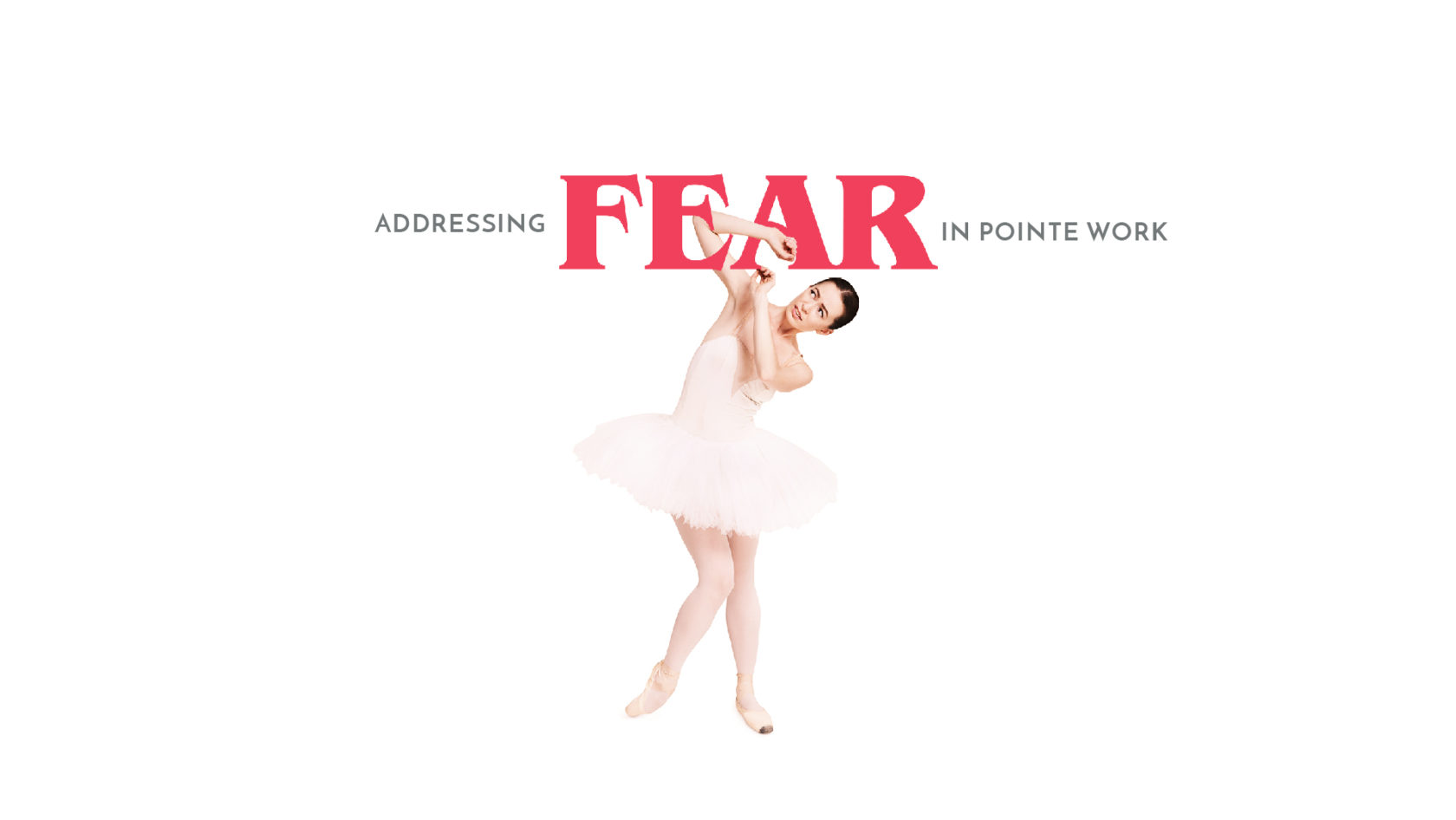We all know how exciting it is to tell a student they are ready for pointe. But we also know the journey ahead in pointe work is fraught with obstacles and fears one absolutely must overcome if they are to achieve any degree of success on pointe.
The truth is, pointe is scary. It is more frightening for some than others, and some dancers face more challenges when it comes to confronting their fears. But the skills learned through this battle with one’s self has the potential to bring about large amounts of empowerment—both in their dancing life and beyond.
Fear Is Detrimental
Fear can paralyze us. It can cause our perspective to become skewed and our confidence to plummet. These things do not combine well with dance. Let’s take a look at some of the issues that can arise when a dancer allows her pointe work to be controlled by fear.
- She will hesitate. We all know hesitating in pointe work almost always leads to never accomplishing the goal. This lack of accomplishment will lead to small dancing which produces little to no growth.
- She will compensate with poor technique. Solid technique requires attack and surety. These two things cannot exist when fear is leading the movement. Instead of pushing with a confident plié from two legs to one, a scared dancer will likely do a weak plié, place the soon to be supporting foot on pointe, and then hoist herself up onto one leg. The goal moves from dancing well to simply getting through the movement as quickly as possible.
- She will give the pointe shoes power. Because she lacks confidence in her ability to hold herself up, she will give the strength she does have to the shoes. She will not be in control of her dancing; rather the shoes will be. She will sink, she will wobble, she will collapse. Because, no matter how fabulous a pointe shoe might be, pointe work is only as strong as the dancer.
- She will end up injured. Injuries are just a breath away for this dancer. When fear leads the way, we almost always make poor choices which can lead to injuries across the spectrum—from small to large.
Learn The Path Through Fear
Simple truth: We cannot just stop being afraid. That isn’t the way it works. And expecting a kid to “just stop being afraid” is a severe misstep which could lead to actual harm. Instead of trying to outrun fear or pretend it it isn’t in us, I suggest we move with intent through the fear. Stopping when needed to catch our breaths and consider the way forward.
Here are some questions to ask yourself when you notice a pointe student struggling with fear:
- Does this student carry fear in her other dancing? If so, start there. Almost everything is amplified on pointe. Especially our weaknesses. If the fear is exclusive to pointe . . .
- Does the student know she is afraid? Would she label her feelings as “fear”? Or would she shrug it off with “I am just tired today” or “I forgot the combination” or some other excuse which holds no validity? If she is not owning her fear yet, help her to do that. If she admits she is scared . . .
- Does she know what she is afraid of? Can she articulate in a clear way exactly what it is that has her pulling back? Is she afraid her ankle will give out? Is she afraid she can’t manage without the barre for support? Is she afraid the hops on pointe will hurt? Is she afraid the leg will sweep out from under her during the pirouette? Find the cause of the fear. And then . . .
- Help her understand every piece of technique that keeps her safe from that fear becoming a reality. If she is afraid of her ankle twisting remind her how to lengthen the ankles and toes, engage the thighs, and pull up in the hips—all the things that help keep the ankle aligned properly. Help her remember she understands these things and that you would not have placed her on pointe if she had not demonstrated proficiency.
- Give her extra work she can do on her own. Having some “homework” to do in between classes helps students take responsibility for their dancing while also building more awareness in them of proper technique. If she is doing the exercises as often as you have instructed, and she is doing with them with care, remind her that her body is ready.
- Teach her how to leverage fear instead of be a victim to it. So often the fear dancers have is not because they aren’t ready or not strong enough or not prepared enough. It is because their heads are playing awful tricks on them. The mind is a powerful playground and fear can easily be the bully. Learning how to channel the energy that exists in fear and pour it into attack, clarity, and precision is exactly what a dancer on pointe needs. Of course we need to move slowly and only give our students material that will serve them well. But when we concede to hesitation, to being afraid, to dancing beneath, we cannot help our students achieve more.
We ourselves must move through our own fears of failing as teachers in order to pave the way for our students to see, trust, and achieve their greatest potential.
Related Articles


Comments
No comments for this post.
Add Comment